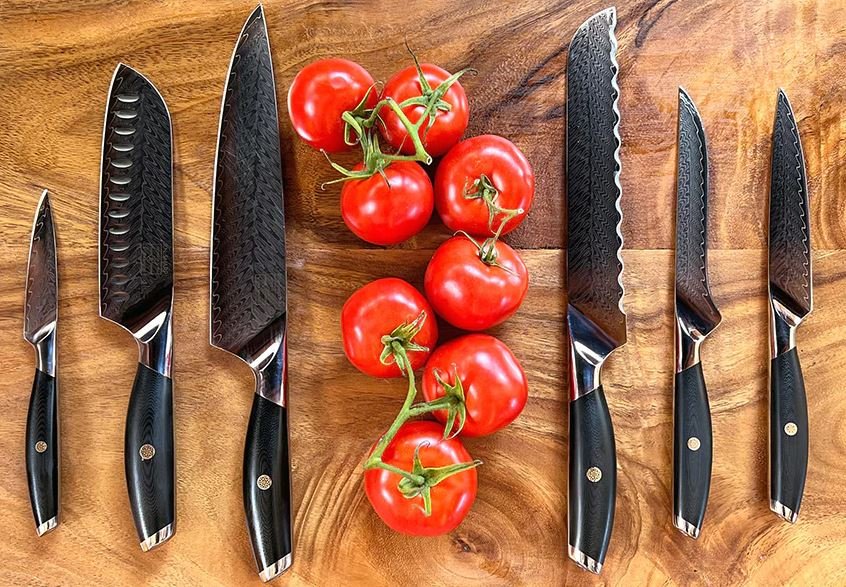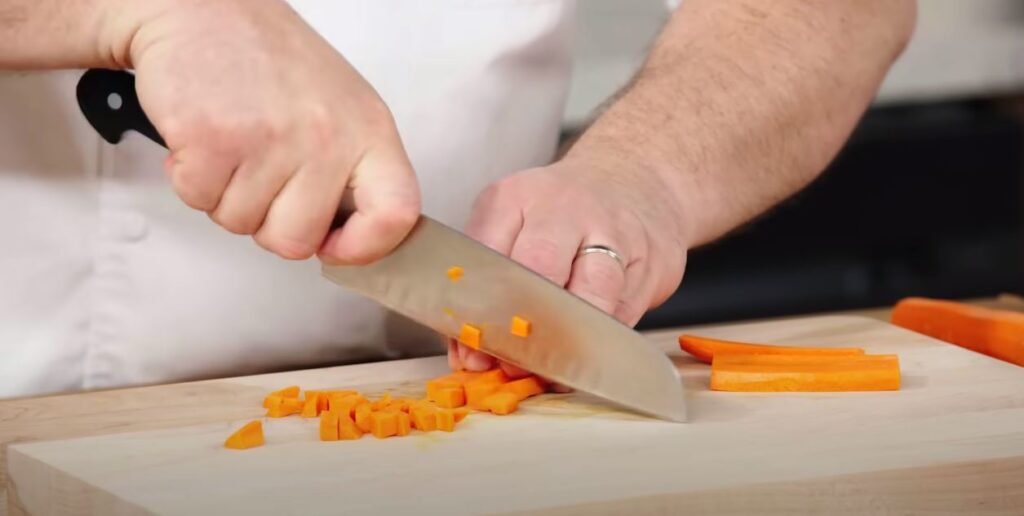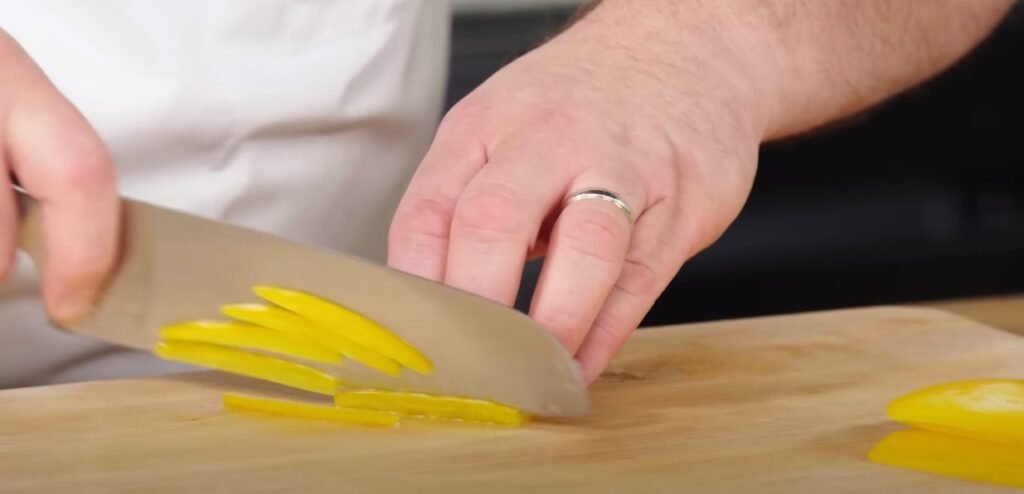Top 10 knife skills for masterful culinary creations 2024
Top 10 knife skills for masterful culinary creations: Developing good knife skills is essential to being a great chef. It
guarantees kitchen safety in addition to improving food preparation’s accuracy
and efficiency.
Respecting the ingredients, your employees, your clients, and the recipe is
essential to culinary innovation. Magic happens when you approach things with
respect!

Basics for Top 10 knife skills for masterful culinary creations
Selecting the Best Knife
Selecting the appropriate knife is essential for efficient and secure cutting. The following factors should be considered while choosing a knife.
Blade Type
Every blade has a specific purpose in mind. For example, a chef’s knife can be used for many tasks, whereas a paring knife is ideal for working with accuracy.
Size and Weight
Select a knife that is comfortable and well-balanced to enable precise control and reduce fatigue.
Quality
Invest in premium knives made of tough components to guarantee lifetime and best results.
1. Sharpening of knife.
Since dull knives require more force to cut, there is a risk that you could cut your hand or finger inadvertently. To sharpen the knives, use a whetstone or get professional help.
2.The Pinch Grip
The cornerstone of good knife holding technique is the pinch grip. It entails pinching the blade close to the bolster with the thumb and index finger while holding the knife handle with three fingers.
Accurate cuts are made possible by the control and precision this grip provides.
3.The Rock Chop

The knife’s blade moves around on the cutting board during the rhythmic “rock chop” cutting motion. It works perfectly for chopping onions, garlic, and herbs.
To obtain regular cuts, mastering this method requires keeping a constant rocking motion.
4.The Slice
A common technique for achieving thin, uniform pieces of ingredients is slicing.
The secret is to keep your fingers safely away from the knife’s edge while still operating the knife with a smooth forward and backward motion.
5.The Julienne

The technique of julienne involves slicing fruits or vegetables into long, thin strips that resemble matchsticks.
Achieving consistency in julienne cuts calls for accuracy and repetition. This is a common method for stir-frying and salads.
6.The Dice
Dicing is chopping ingredients into uniformly small cubes.
This method is used by chefs to chop vegetables such as tomatoes and onions to perfection. It’s an essential ability in a lot of traditional recipes.
7.The Chiffonade
A method for cutting leafy greens or herbs into thin, ribbon-like strips is called chiffonade. This method is frequently applied to pasta meals, salads, and soups.
8.The Tourne

Using root vegetables like potatoes and carrots, tourne, also called “turned” vegetables, entails shaping the veggies into oblong, seven-sided shapes.
9.The Batonnet
Making uniformly proportioned, rectangular sticks out of vegetables like potatoes and cucumbers is known as a bainnet cut.
This method is frequently applied to the preparation of crudités and French fries.
10.Mincing
Cut the food into thin strips and quickly move the knife back and forth to mince the long strips in order to chop it extremely finely.
Conclusion
In conclusion, developing excellent knife skills is essential for a great chef as it guarantees food safety, accurate preparation, and overall efficiency in the kitchen. Respect for ingredients, co-workers, clientele, and recipes is emphasized as a stimulus for culinary innovation, even above and beyond technical proficiency. It is essential to choose the correct knife depending on factors such as blade type, size, weight, and quality. For best results, regular sharpening is also advised. Cutting skills like the pinch grip, rock chop, slice, julienne, dice, chiffonade, tourne, batonnet, and mincing are emphasized; each has a distinct use in cooking. These abilities are the foundation of culinary success since they not only help ensure safe and effective cooking but also demonstrate the chef’s artistry, accuracy, and respect for the trade.
